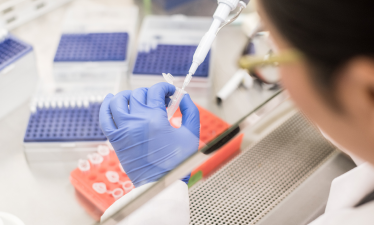In late 2022, we explored how biotechs were being asked to fill pharma’s innovation gap in an environment where valuations were falling, acquisitions and IPOs were slowing, and funding was increasingly hard to secure. Biotechs have had to do more with less. Less opportunity. Less money. Less time. And, as we enter the new year, less staff.
2022 Layoffs Spill into 2023
Fierce Biotech reports that the layoffs of 2022, which saw more than one hundred biotechs cut staff, are spilling over into 2023; so much so, they had to relaunch their layoff tracker within days of retiring it; and experts disagree on how long the cuts will last.
In addition to dropping staff, many companies are also dropping programs, shying away from platform technology, and refocusing efforts on their most promising clinical assets. While the industry has always bounced back from downturns, the speed at which that will happen this time around is still up for debate.
Rebound Ahead?
While only time will tell, analysts from PwC, RBC, and Baird are predicting a bit of change and a bit of the same in 2023. They suggest:
Mergers and acquisitions will likely pick up again as biotech valuations righted themselves in 2022 and big pharma has cash to spend in order to fill pipeline gaps and fuel inorganic growth.
The IPO market could remain challenging and biotechs may need to keep exploring unconventional options, such as securing additional rounds of private funding, reducing costs to buy time, or pursuing alternatives like licensing agreements or special acquisition deals.
The impact of government policies should not be overlooked, including rate hikes that may hinder investment or impending US Medicare-price-negotiation laws that, on the surface, are more favorable for large molecule versus small molecule drugs and could unduly influence investment and program decisions.
Weathering the Storm
The uncertain market has forced biotechs to refocus, run lean, and differentiate themselves. Companies need to make strategic decisions at every step, reduce inefficiencies, and focus on their core competencies—great ideas in theory that can be challenging to accomplish in practice. So how are companies doing it?
Leveraging Data – Data are more important than ever in today’s environment. Data can guide individual research decisions and overall strategic directions. Data are essential to adopting predictive technologies like machine learning and artificial intelligence. Data are required to assure partners and investors that programs are on track. Unfortunately, capturing and making sense of data can be challenging for many reasons. Perhaps it’s the overwhelming volume and variety of siloed data, or the intricacy of a team’s workflows, or the disparity of the instruments and software needed to innovate. Adopting a scientific operating platform can help biotechs ensure all their diverse R&D data are accurately captured, easy to find, and ready to use within the specialty applications their experts need to innovate and make decisions.
Optimizing Processes – Process inefficiencies that at first seem like minor inconveniences can quickly escalate into major problems in the face of change, whether that be layoffs and budget cuts that reduce the number of people available to perform manual tasks, or rebound and growth that increases programs (and data) exponentially. Companies need to get their team members, and the tools they use, working better together so that experts can spend their time on core work. According to Deloitte, process efficiency will be a key strategic goal for a majority of biopharma companies through the first half of this decade. While technology investment is believed to be the primary means to this end, Deloitte cautions that transformational process change is also needed. This means thinking beyond point solutions and uncovering ways for R&D teams to work better together as a whole. Many companies working in small molecule drug discovery are doing this by adopting integrated software, guided workflows, and decision-support tools that span the hit-to-lead workflow. Uniting the tools and systems researchers need for things like experiment capture, compound synthesis, inventory management, QC and SAR analysis, screening, and entity registration can pay off in dividends. For example, it can help teams reduce error-prone timesinks like manual data transfers, avoid redundant experimentation, reduce duplicate compound registrations, improve experiment and project tracking, and minimize IT reliance for tasks like data mapping or system integrations.
Outsourcing – Many biotechs are also turning to CROs when faced with the competing demands of spurring innovation and controlling costs. Outsourcing can help companies better focus on their core competencies, increase their scale and capacity, diversify their pipeline, and access cutting-edge tools and talent. By some estimates biotechs today are outsourcing two-thirds to 100% of their R&D efforts to CROs, who are helping with tasks such as target ID and validation, assay creation, artificial intelligence, compound synthesis, formulation development, data and system integration, and more.
If your company needs help weathering the biotech downturn, contact us to see how Dotmatics can help.




